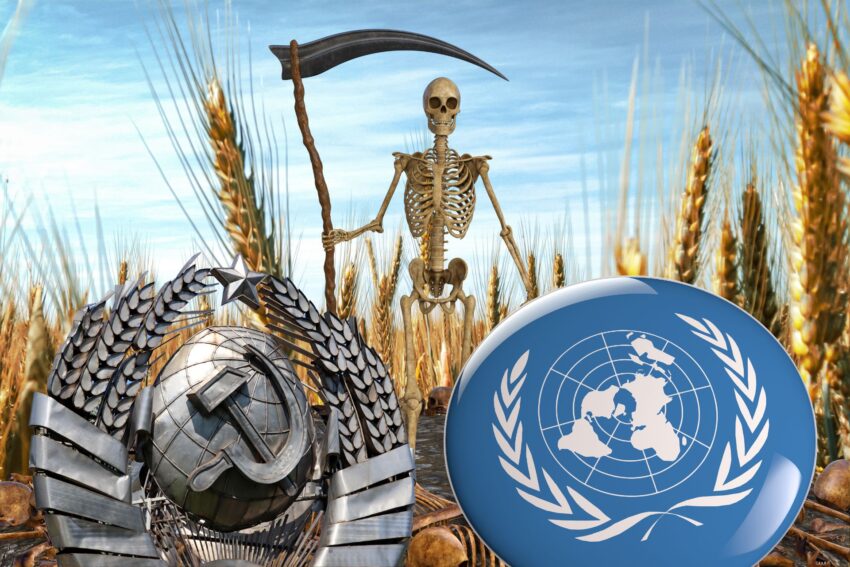The Holodomor, a man-made famine that devastated Ukraine from 1932 to 1933, stands as one of the darkest chapters in human history, where state control over agriculture led to the genocide of 7 to 10 million people. This event, orchestrated under Joseph Stalin’s regime, involved the forced collectivization of farming, which not only stripped Ukrainian peasants of their land and livestock but also deliberately engineered a famine that targeted the Ukrainian identity and culture. The Holodomor’s lessons are poignant, especially when viewed through the lens of contemporary global agricultural policies and the push towards centralized control under the guise of environmental and social governance.
Historical Context: The Holodomor
Stalin’s policy of collectivization was not merely an economic strategy but a tool of political oppression. By seizing private land and enforcing grain quotas that were impossible to meet, the Soviet regime effectively turned agriculture into a weapon. The famine was exacerbated by policies that prevented Ukrainians from leaving famine-stricken areas, ensuring that the suffering was contained and intensified. Historians and scholars have detailed how these measures were not just about economic control but were aimed at the cultural and national eradication of Ukrainians, fitting the legal definition of genocide.
Stalin imposed the Soviet system of land management known as collectivization.
This resulted in the seizure of all privately owned farmlands and livestock, in a country where 80 percent of the people were traditional village farmers.
Among those farmers, were a class of… https://t.co/l5OVbomoLV
— Kat Kanada (@KatKanada_TM) January 26, 2024
Modern Parallels: The WEF, UN, and CCP’s Influence on Agriculture
Today, the World Economic Forum (WEF), United Nations (UN), and the Chinese Communist Party (CCP) advocate for Sustainable Development Goals (SDGs) that, while aimed at sustainability, could inadvertently or deliberately lead to similar outcomes as the Holodomor. These goals often push for policies that might reduce agricultural output under the banner of combating climate change. For instance, proposals to reduce livestock, limit fertilizer use, or control land use could significantly impact food production, potentially leading to shortages not unlike those engineered in Ukraine.
The TRUTH about the Dutch farmers protest.
Right now something is going on in Europe that should send chills down your spine. Something that we didn’t think could happen. Yet here we are.
You see, in the Netherlands, the government is planning on essentially SEIZING thousands… pic.twitter.com/DlOcTzBYBa
— PeterSweden (@PeterSweden7) November 24, 2023
The Alarming Trend of Foreign Land Acquisition
Adding to these concerns is the trend of foreign entities, including the CCP, purchasing agricultural land in countries like the United States. This acquisition of farmland raises questions about food security, sovereignty, and the potential for external entities to influence domestic food production policies. The scenario echoes the fears of state or foreign control over agriculture, where decisions about what to grow, how much, and for whom, are made far from the fields themselves.
Chinese companies have already purchased over 380,000 acres of American farmland- roughly 14x the acreage of Disneyworld. Most of these plots are located near airbases and other sensitive military facilities. pic.twitter.com/W2erXSD2uN
— Morgan Ortagus (@MorganOrtagus) August 4, 2023
The Biden-Harris White House has opposed legislative measures to stop China and other foreign adversaries from buying US farmland, which is perhaps not surprising given Biden and Xi have previously worked together to “address the climate crisis.” Many see this as a very dangerous policy, especially considering the proximity of China’s farmland acquisitions to US military bases.
Map shows Chinese-owned farmland next to 19 US military bases in ‘alarming’ threat to national security.
Why do we allow China to keep buying our farmland?
Link to story below. pic.twitter.com/FVCm92grmg
— 🇺🇸 ❤️ 𝓟𝓔𝓒𝓐𝓝💃C8🚗 🇺🇸 (@PecanC8) June 23, 2024
A Call for Vigilance
The Holodomor serves as a stark reminder of the dangers of centralized control over agriculture. When governments or international bodies dictate agricultural practices under the pretext of higher goals like climate change mitigation, there’s a risk of repeating historical mistakes. The push for “sustainable” agriculture must not come at the cost of food security or national sovereignty.
WAKE UP WORLD !!🌎 It isnt the farmers ‼️
It's WHO, CDC, USDA, EU, WEF
Bill Gates, Fauci, Soros, SchwabCrack open a book. Read how Stalin collapses the food system in Russia.
"Rural peasants forced to join collective farms. Those that owned land or livestock stripped of… pic.twitter.com/vstS0U2QNx
— Տᗩᑎᗪᖇᗩ🎗️ (@SandraXFreedom) April 8, 2024
Conclusion
The lessons from the Holodomor are clear: control over agriculture can be used as a tool of oppression and genocide. As we navigate the complexities of modern agricultural policies, influenced by global bodies and foreign investments, it’s crucial to remain vigilant. We must prevent any governments (including world government) from enacting a modern-day Holodomor. The world must remember that while the intentions behind current agricultural reforms might differ, the mechanisms of control and their potential consequences remain historically consistent. Awareness and historical education are vital to ensuring that such tragedies are not repeated.


